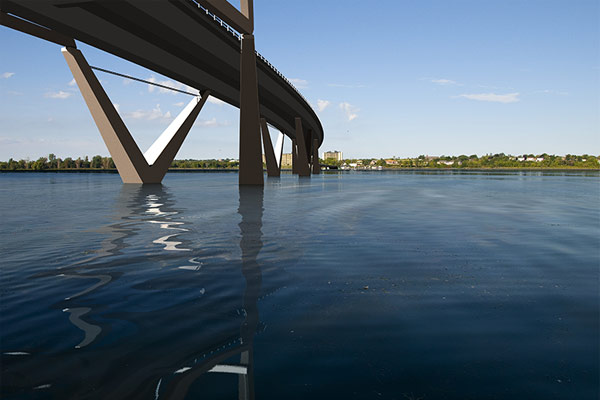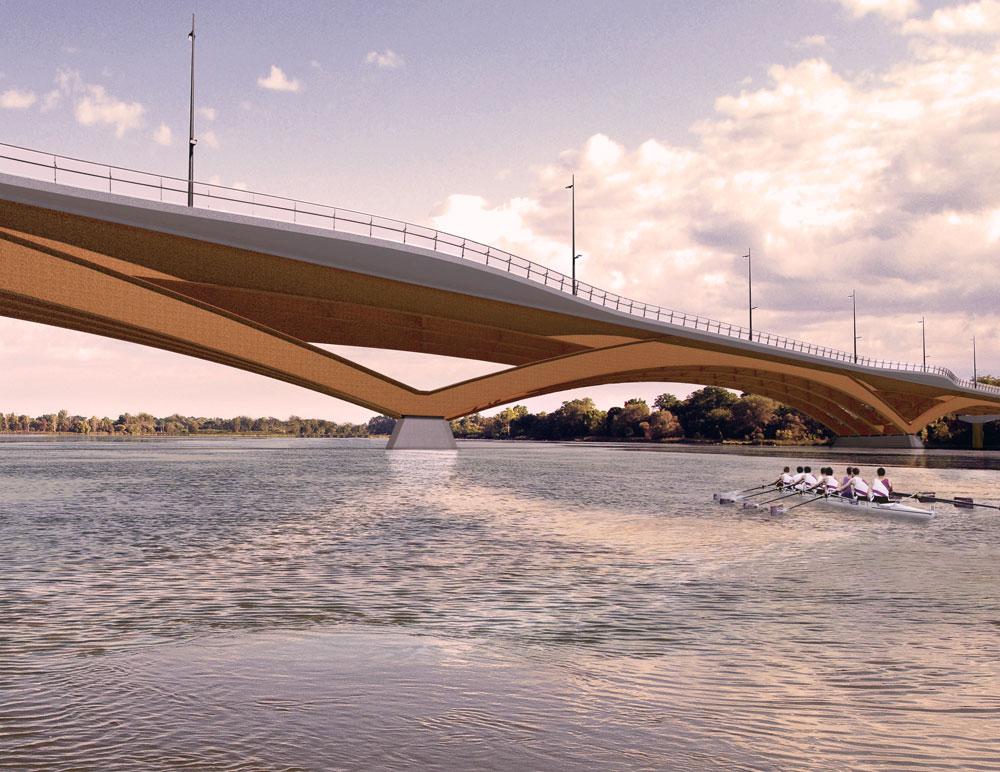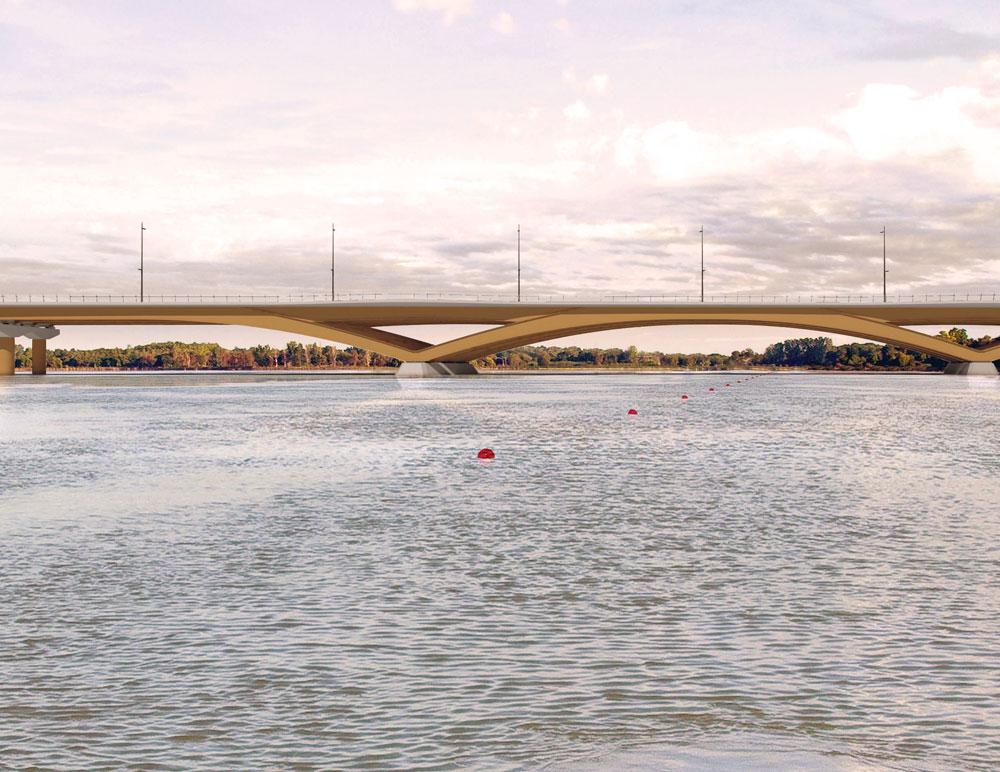Kingston’s third bridge crossing is sporting a new “light and low” design that’s far from drab, according to city officials.

The dramatic over-arch and bright paint that once highlighted the $180-million project are gone.
But officials say the revised design is a better fit for the surrounding character of the Cataraqui River, and will still offer lookout points to give pedestrians, cyclists and other users a unique perspective of the waterway.
“We have a new bridge design — yes, it’s not quite as dramatic — but it still definitely has features that are attractive,” said Mayor Bryan Paterson.
He says Parks Canada, the federal department that manages the waterway and recently approved the construction project, didn’t want the fixed crossing to detract from the river’s natural beauty.
“Parks Canada wanted to accentuate the natural beauty of the Rideau Canal. This is a UNESCO World Heritage Site.”
Some bridge opponents recently took to social media to mock the design as unimaginative and similar to many other bridges that dot the route along Highway 401.
However, the city’s point man in the bridge construction says the redesign is far from drab looking.
“We’ve heard an awful lot of people say the new design looks great. It has a more sleek appearance,” said Mark Van Buren, the city’s deputy commissioner of the major projects office.
The latest design was unveiled during a mid-December sod turning ceremony to mark the official start of construction.
The 1.2-kilometre bridge bears little resemblance to the preliminary designs that were first envisioned between 2015 and 2017, when council approved the massive transportation project.
The original soaring archway that marked a public lookout area at the bridge’s midway point of the river crossing has been removed.
“The main span is certainly an evolution from where we were at,” Van Buren explained.
He describes the new simplified design as “light and low,” less steel and the arch removed, while still maintaining an acceptable clearance to boaters in the main navigation channel.
He says feedback from residents, particularly near the bridge’s east landing point near Highway 15, has been positive.
“Many residents in the east end like it. The bridge doesn’t have the imposing elevation,” Van Buren said.
He says removing the signature steel arch will also reduce need for ongoing maintenance and repairs.
Van Buren says another “significant” visual change is shifting the design elements to the underside of the bridge.
The original V-shaped bridge support pillars have been replaced with steel under-arches that rise from cement pads in the water.

“Now you have under arches, which are attractive in and of themselves, that will be under lit. I think there will still be very attractive elements to this bridge,” the mayor explained.
The curved steel beams that will form the under-arch design will not be painted.
Van Buren says steel is often painted to protect it from corrosion — like the green paint on the LaSalle Causeway lift bridge — but they’ve decided to use “weathering steel” for the bridge supports.
He says it has a rust-like appearance but includes a protective coating that prevents long-term corrosion.
City engineers initially planned to use more steel, but because of fluctuating steel prices, Peter Kiewit Sons and Hatch Ltd., the international team contracted by the city to design and build the bridge, opted for more reinforced concrete.
“There was concern world steel markets would go haywire. Concrete has a more stable market and pricing,” Van Buren explained.
While the bridge look has changed, the main driving surface hasn’t.
It will feature two lanes for motorized vehicles and a dedicated four-metre wide multi-use pathway on the south side of the bridge.
In water construction of the bridge, connecting Gore Road on the river’s east side to John Counter Boulevard on the western shore, began in late December.
Van Buren says rock placement is underway to construct a temporary causeway to access the piers and superstructure.
The causeway will also feature a small lift bridge for boaters to pass by during the three year-long construction phase.
“We are on target for an opening by the end of 2022.”
The bridge marks the culmination of decades of debate in Kingston to have a fixed link that’s owned by the city.
The Ontario government owns the Highway 401 that crosses over the Cataraqui River and the federal government operates the LaSalle Causeway at the mouth of the Rideau Canal.
The third crossing, touted as the largest road infrastructure project in Kingston’s history, will be situated about midway between the two existing transportation routes.








Comments